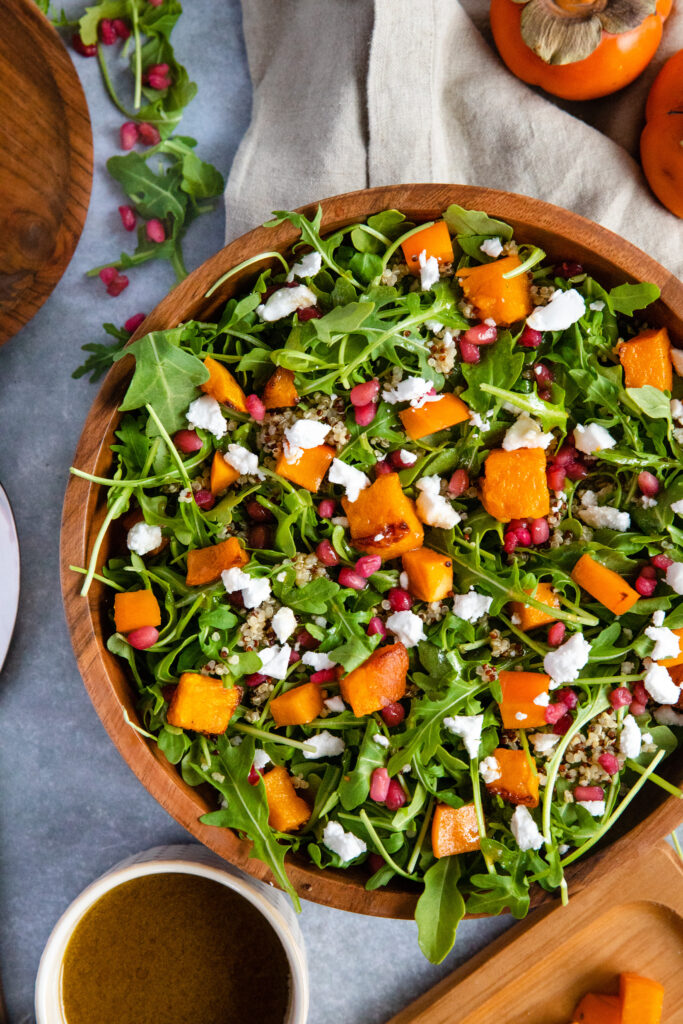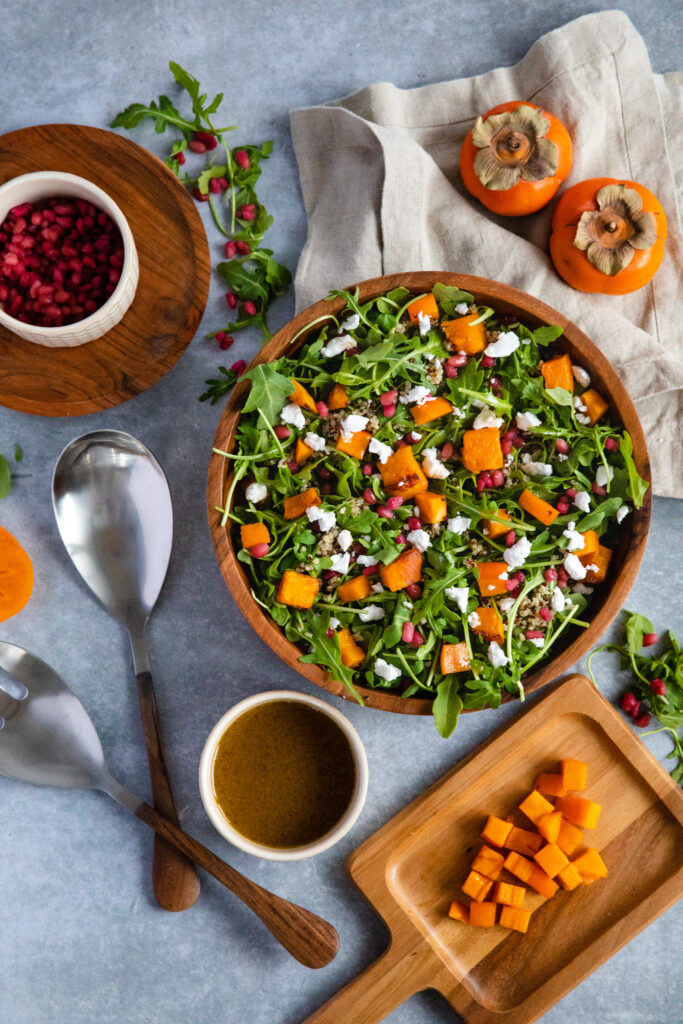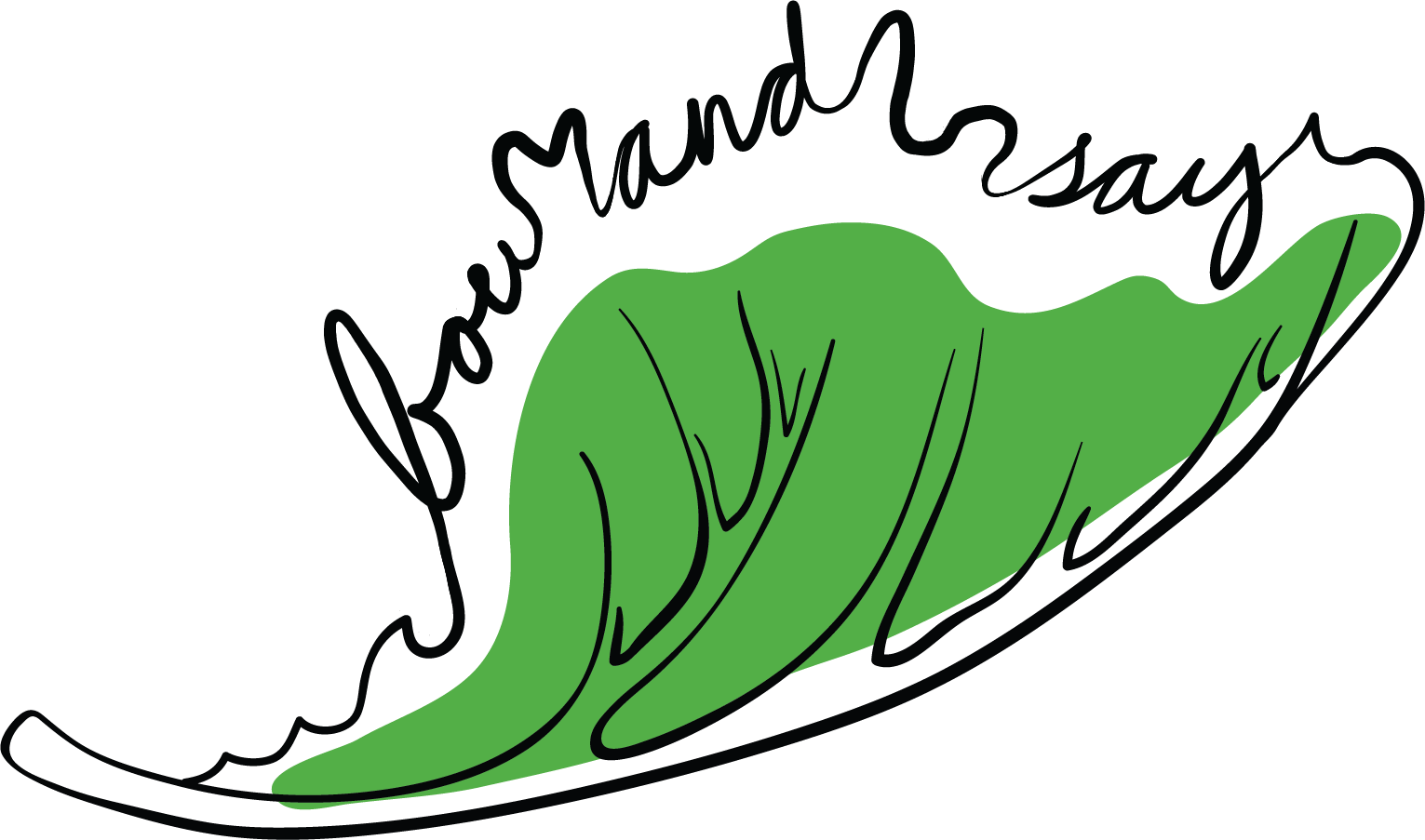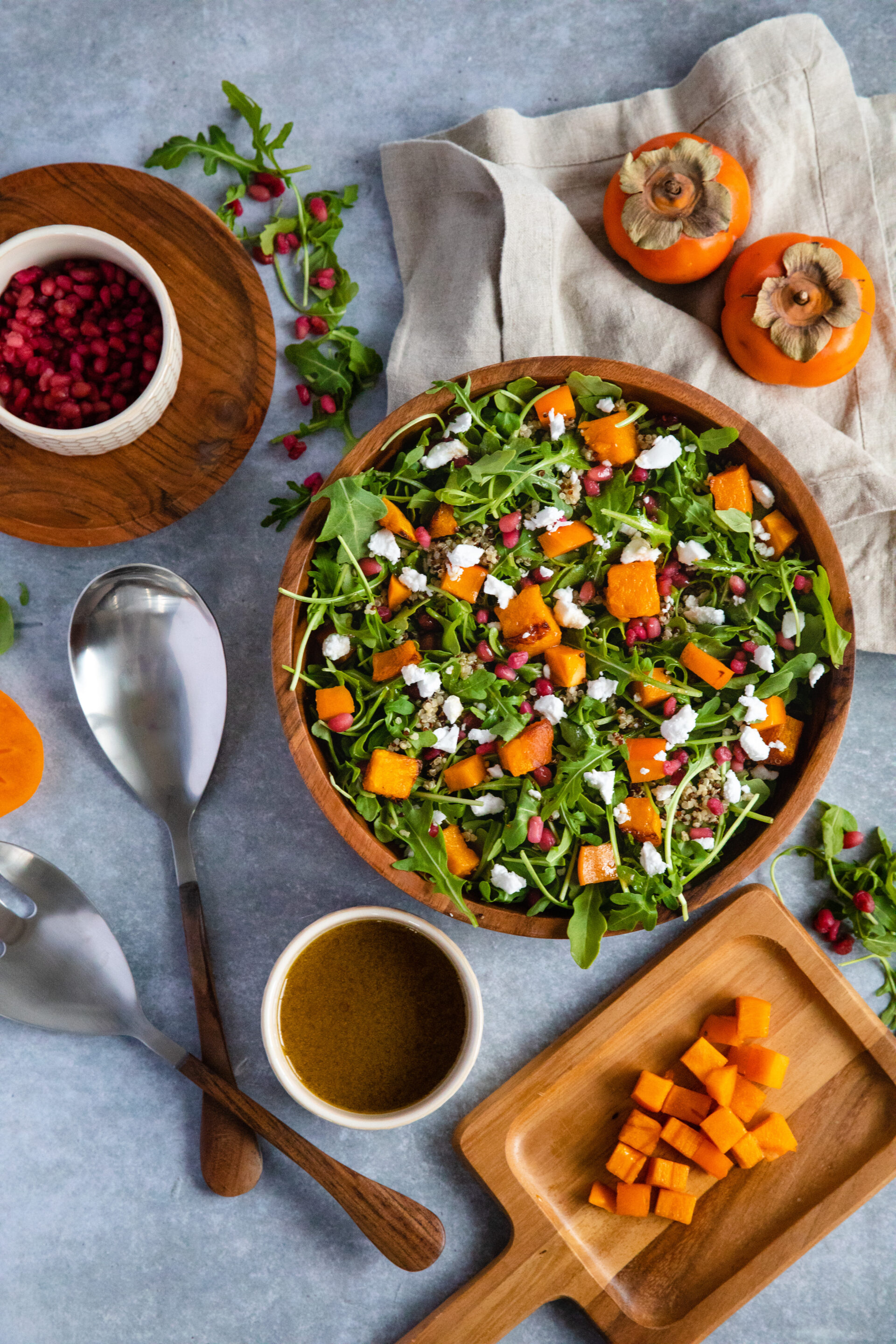Join me in welcoming both a winter fruit and squash: Persimmon and Butternut! Yes, although it sometimes pains me to say it, winter is here to stay. If this season doesn’t leave you in the best of spirits like me, let’s both try not to be too…
#Lettucebowandsay “Persimmon-istic”
Not only does this salad use two new winter fruits and veggies, it also includes a hearty, year-round grain and a few other pops of flavorful color. I chose to eat salads year round rather than strictly alternate meals to counterbalance the outside temperature. Doing so keeps me from falling too deep into the winter blues. There is so much fun in winter cooking and flavor profiles so why not combine that with salad making fun?
Persimmon

From the moment I learned what a Persimmon was, I’ve been trying to get my hands on one. Their season runs roughly between October to January. I noticed in October and November my local grocery stores were inundated with all the fall things. I love fall most of all but there wasn’t a persimmon in sight.
In early December I quickly ran into a grocery store I don’t typically shop at. And boom. Right in front of me in the produce section was a large arrangement of persimmons. Of course I didn’t have a shopping cart so I stuffed my arms full and was then on a mission to create the perfect winter salad.
Persimmon Nutritional Value
Persimmons are high in important vitamins and minerals, including vitamins A, C and B, potassium and manganese. They also contain beneficial plant compounds like tannins, flavonoids and carotenoids that have powerful antioxidant qualities.
Butternut Squash
I typically categorize squash as either summer or autumn. This is because in the fall, all the squash starts to shift. Although the shift begins in the fall, the two categories are summer and winter squash. Together they cover all 4 seasons with quite a bit of overlap depending on the variety.
The most common winter squash are: acorn, butternut, delicata, kabocha and pumpkin.
Butternut squash is one of the most versatile. It takes well to just about every cooking method and pairs well with a wide variety of flavorings.
Butternut Squash Nutritional Value
Butternut squash is an excellent source of provitamin A carotenoids, vitamin C, B vitamins, potassium, magnesium, and manganese.

Interested in more Winter fruit and veggies? Click HERE

Persimmon Butternut Squash Salad + Pomegranate Vinaigrette
Equipment
- Oven
- Stove
Ingredients
Roasted Butternut Squash:
- 1 small Butternut Squash (or 1/2 medium – skins removed and cubed)
- EVOO
- Salt
Quinoa:
- 1/2 Cup Quinoa
- 1 Cup Water
Pomegranate Vinaigrette:
- 1/4 Cup EVOO
- 3 Tbsp Champagne Vinegar
- 2 Tbsp Pomegranate Juice
- 1 Tbsp Maple Syrup
Salad:
- Arugula
- Quinoa (cooked)
- Butternut Squash (roasted)
- Persimmon (cubed)
- Pomegranate Seeds
- Vegan Feta (crumbled)
- Pomegranate Vinaigrette
Instructions
Roasted Butternut Squash:
- Preheat oven to 425°F.
- Prep the squash by cutting into cubes & place into a small bowl. Add EVOO and sprinkle some salt. Stir until evenly coated.
- Line a baking sheet with aluminum foil and lay squash onto pan in one even layer. Roast for ~35-40 minutes or until squash is soft and slightly browned on edges.
Quinoa:
- While the butternut squash is roasting, cook your quinoa. Add quinoa and water to a small saucepan on high heat. Bring to a boil and then reduce heat to a simmer. Cover and let cook for ~10-12 minutes or until outer ring of quinoa has popped.
Pomegranate Vinaigrette:
- Add all ingredients to a container and shake!
Salad:
- Once the butternut squash is cooked and cooled start to build your salad.
- Start with your greens and layer on each ingredient ending with your Pomegranate Vinaigrette.
Notes
December Seasonal Fruits + Veggies
used in this recipe:
Click to find more recipes with these ingredients!

